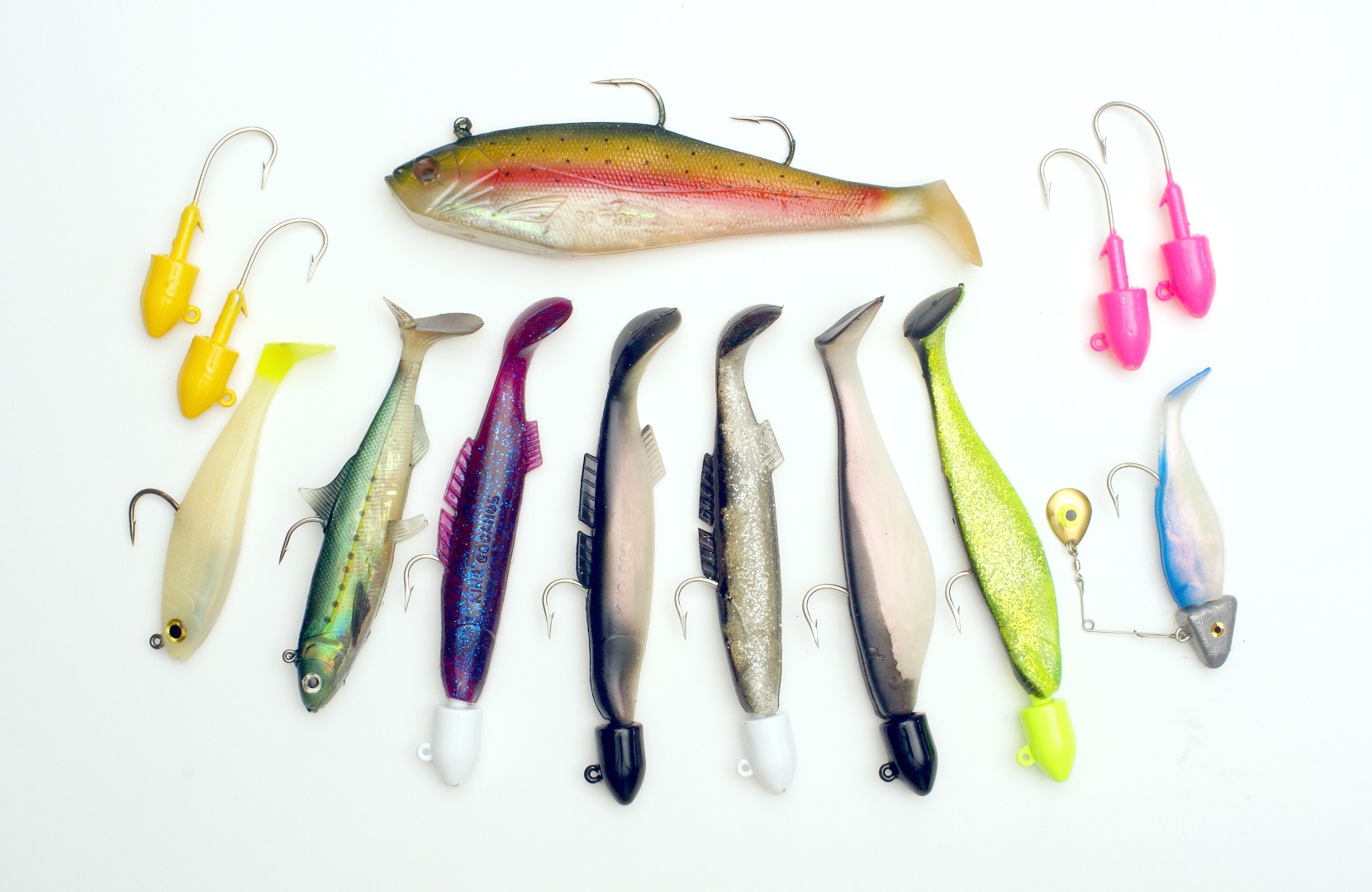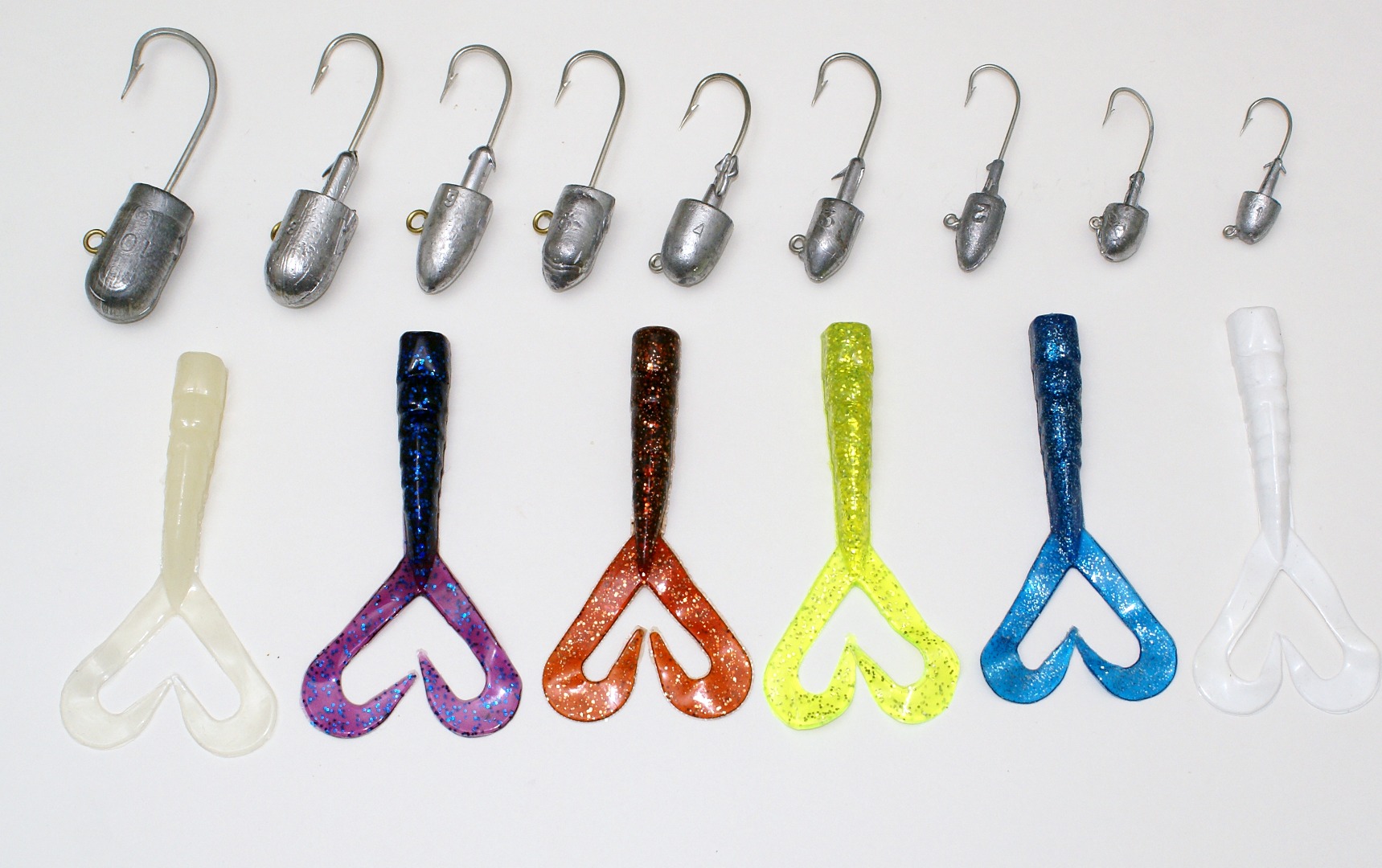Chetco River Fish Report for 2-17-2018
The Magic of Plastic
Chetco River - Brookings, OR (Curry County)

by Larry Ellis
2-17-2018
Website
With the Chetco River flowing at just about 1,000 cfs and dropping, and low flow rates of other rivers like the lower Rogue and California’s Smith rivers, anglers are temporarily giving up on catching steelhead and are heading for the ocean in search of bottom fish such as rockfish, greenling and lingcod.
And while it is true that a lot of anglers are catching their lingcod using herring, anchovies and shrimp flies, single fishing for these denizens of the deep using soft plastic baits are really where the action is.
Single fishing is defined as using one lure at the end of your line to elicit a strike. It gives an angler that one-on-one feeling with the fish he or she is catching and allows them to feel every nuance of a fish’s fight; every shake of its head and every wiggle of its tail.
Besides, with the Oregon limit only set at 5 rockfish, two drops with a set of shrimp flies would end your day in rapid succession, and the object of fishing is not just catching fish – it’s being with Mother Nature and all Her marvelous wonders.
Besides, all the aforementioned attributes of the deep briny, single fishing for any species will always give you the chance of catching larger fish, and if you’re single fishing a lure made of soft plastic, it makes these fish less apt to spit out your lure, as opposed to using lures made of hard metal. Soft baits just tend to stay in a fish’s mouth for longer periods of time.
A soft plastic bait can range from single- to twin-tail plastics. You can also be quite successful on the water using soft plastic 5-inch rip baits and 6-inch plastic worms. Swimbaits are also a popular soft plastic lure that can be bought for peanuts and sold to the fish with the biggest mouths and the fastest speeds.
Soft plastic baits can be used virtually at any depth and around any kind of cover.
If the current is too strong at 50 to 70 feet of water, then simply downsize your lures and fish right in the kelp, where both rockfish and lingcod abound. And they don’t call those other fish kelp greenling for nothing either. There are some anglers whose taste buds prefer the delicate but firmer flesh of a kelp greenling.
Whichever depth arena you choose to fish, the technique behind being proficient at using soft plastics is important if you want to be consistently successful on the water.
Whichever soft plastic you intend on using, your will be fishing most of them on-the-drop, also called on-the-sink, and most of the time you will be fishing your soft plastics within a foot from the bottom, where rockfish tend to hide.
Fish perceive a sinking lure as a dying baitfish or some sort of a dying fish, and they will always go after these stragglers first. So you always want to fish your soft plastics purposefully so that they are going to get bit while they are sinking.
While it is true that your quarry will strike a moving bait swimming in a straight line, they will always go after these ‘injured fish’ first.
Let’s say that you are fishing in approximately 50 feet of water, on a high spot that has come up from 75 feet.
Make your cast, but always try and let your lure sink on a semi-taut line, a line that is a hair from being fully tight, yet a hair from being fully slack. It may be harder to achieve this scenario when the wind is blowing greater than 7 knots or if there are multiple currents in play. But always try and keep this falling method as your ideal goal at all times.
It also helps if you have a baitcasting reel, where you can feel the line coming off the reel resting on your index finger, while controlling your lift/drop action with the rod itself using your other arm. It is a known fact that the index finger has more sensitivity and more pressure receptors than any other finger of your hand, so you will want to use this to your advantage.
Your first cast will always be your most important cast because it will cause your lure to freefall more naturally into the fish’s bite zone. If you feel a peck on your index finger or if you see a twinge in your line as the lure is falling – that’s a fish. Set the hook! Also it is important to note that these pecks will feel the same no matter what size the fish is.
If you haven’t gotten bit on your first cast, make sure that your lure has bottomed out. Now with your rod tip pointing toward the water, lift up on your lure and let it fall back to the bottom, treating every cast as if it was your first cast, taking up the slack line with your reel.
Continue repeating this procedure until your lure has made it all way back to the boat.
The speed of the current will dictate how heavy of a jighead to use. With little or no current, a 2-ounce jighead will suffice, but you may have to upsize your jighead weight according to the speed of the current. As the current gets stronger, and if you are using larger soft plastics, then use heavier jigheads.
Free-spooling is a technique that you may also have to deploy in stronger current situations. Free-spooling is a method where you will keep your reel in free spool for longer-than-usual times to allow your lure to maintain contact with the bottom. It is a very effective technique that will make you the most-noted angler on your boat because you will simply catch more fish than the other person.
When you are free-spooling a lure, you will have to reel in twice as fast as the other anglers when the skipper says he’s busting a move for another location.
When free-spooling is causing you to use more line than usual, it is time to move into shallower fishing venues, such as around the kelp.
Fishing inside or around the kelp will give you the chance of downsizing the weight of your jigheads and plastics because you will be fishing in shallower water. This type of scenario renders quite well for jigheads ranging from 3/4 to 2 ounces and for plastics ranging from 4 to 6 inches. It is also a great venue for using 5- to 6-inch swimbaits.
And don’t throw away all those bass plastic lures just because their colors have bled onto each other. All plastic worms will catch fish – period, exclamation mark, end of story!
Tight lines.
Larry Ellis, author, writer, columnist and photographer has had a 50-year passion for fishing in California and Oregon's saltwater and freshwater venues. He is a well-known writer for Oregon, Washington and California Fishing and Hunting News, Northwest Sportsman, California Sportsman and Pacific Coast Sportfishing. He currently writes monthly for Salmon Trout Steelheader Magazine, and is the author of two books, "Plug Fishing for Salmon" and "Buoy 10, the World's Largest Salmon Run." Both books can be bought from Amato Publications (amatobooks.com), Amazon and eBay. Ellis particularly loves living in his hometown of Brookings, Oregon - The heart of salmon country and gateway to fishing paradise.
Photos
More Reports
Ocean Alive with Bottom Grabbers
2-10-2018
Pacific Herring Still in Crescent City Harbor I just love living in this little slice of heaven called Brookings. It has...... Read More
Pacific Herring Arrive in Crescent City in Full Force
Chetco River
2-3-2018
Fishermen - start your sabikis! Pacific herring have made their annual appearance on January 31 in Del Norte Harbor in...... Read More

Website Hosting and Design provided by TECK.net
